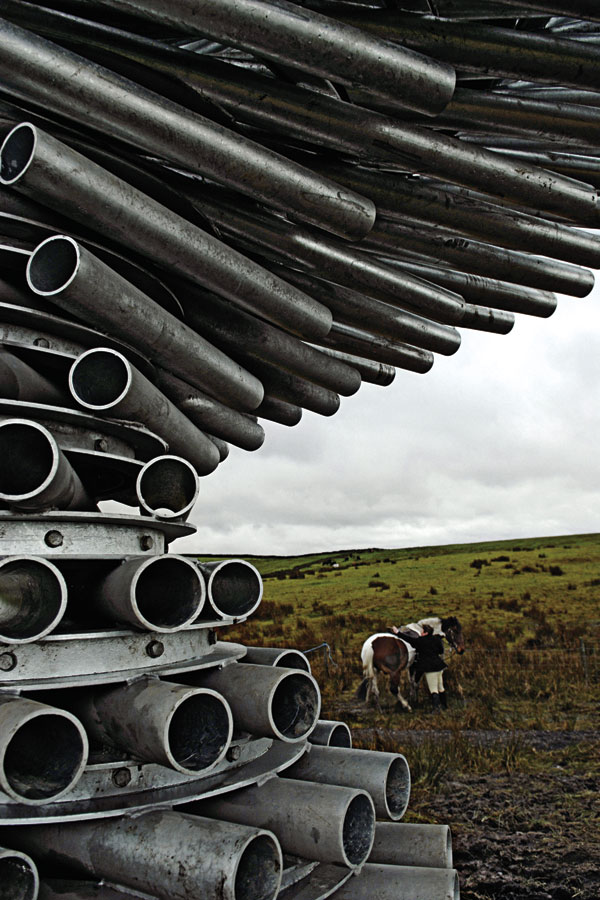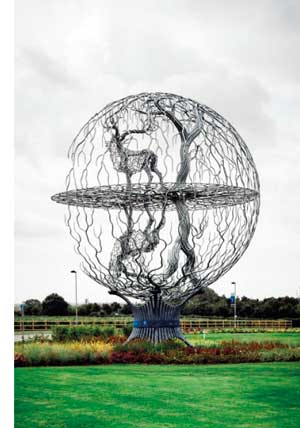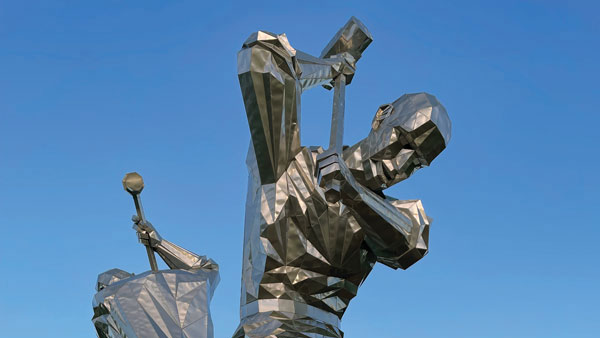SSDA Awards
SSDA 2008 – The Singing Ringing Tree, Burnley
Topping a hill in Lancashire, Singing Ringing Tree is a musical sculpture and part of a project exploring the role of art in regeneration.
FACT FILE: The Singing Ringing Tree, Burnley
Architect: Tonkin Liu Ltd
Structural engineer: Jane Wernick Associates
Steelwork contractor: Mike Smith Studio
Main contractor: Mike Smith Studio
Client: Burnley Council
Councillor Roger Frost, Executive Member for Leisure and Culture, Burnley Borough Council described the Singing Ringing Tree as an important new landmark for the town, which will play a key part in raising the profile of Burnley and its regeneration. “This unique landmark will also support the town’s identity, creating a legacy for future generations.”
Constructed from stacked mild steel pipes of varying lengths and sitting on a hill overlooking the town of Burnley, the Singing Ringing Tree is one of a series of structures designed to occupy high points in the Lancashire hills.
Architects Tonkin Liu says the project was designed to encourage both local people and visitors to explore the surrounding countryside. The Singing Ringing Tree takes the form of a tree bending to the winds and harnesses this energy to produce a low, tuneful song.
According to Jane Wernick Associates, the structural engineer for the job, the project harnesses the characteristics of the site and from a structural perspective it is a very small but highly complex sculpture designed on a modest budget.
The structure is completely self-supporting and the mild steel tubes are sufficiently heavy to ground the asymmetrical form and prevent it from toppling.
Galvanised steel was chosen for the project because it is strong, stiff and durable, and therefore able to withstand the rigours of a site that in extreme cases can experience wind speeds of 160km/h.
The weight from each layer is transferred by steel rings which act to tie the tubes in each plane to each other and provide a load path down to the foundations. The slight horizontal rotation of layers also provides horizontal in-bracing. The structure has also been designed to tolerate people climbing on it and withstand snow build-up along its tubes.
A total of 320 pieces of galvanised steel pipe, divided into 21 layers went into constructing the asymmetrical double-cantilevered sculpture. The length and number of pipes vary, and fill in an oval on plan. Steel circular rings of varying sizes define each layer of the sculpture and support a plane of parallel pipes spaced 200mm apart.
The sculpture is at its widest at the top, extending to about 4m. This is above the centre line, which means the weight of the pipes puts bending into the sculpture. It is towards the top that the 25 pipes that produce the sound are positioned.
The narrowest part of the sculpture – 1.2m – is in the middle, and this is where the stresses in the structure are the highest. Computer models were used to calculate how the lines of force would transfer through the structure’s layers, rings, bolts and pipes.
In order to make the sculpture sing, the tubes vary in length and diameter to create a range of musical chords, and are arranged in a regular rhythm of layers. Each of these layers differs from the next by a 15 degree horizontal shift, creating an asymmetrical sculpture in the round, which responds to the changing wind directions.
To create flutes that would tune the sound made by the wind, slots were added to the underside of 25 pipes.















